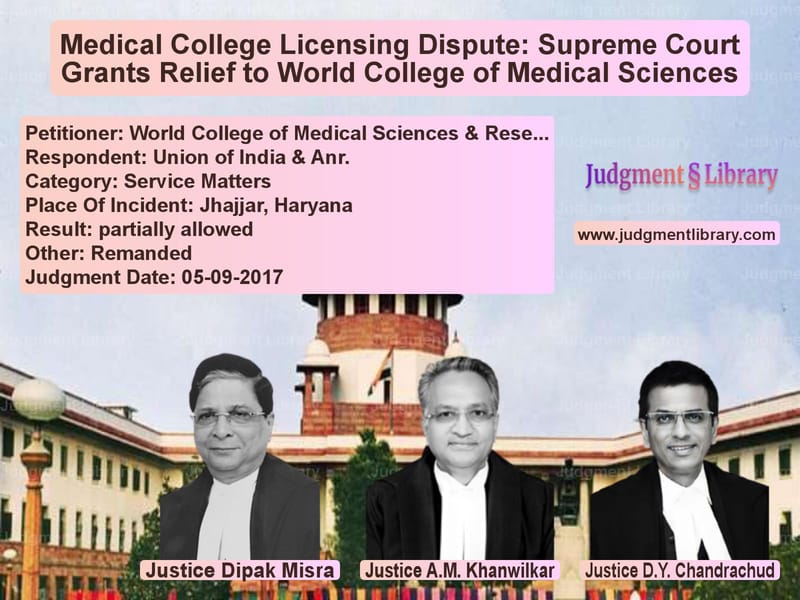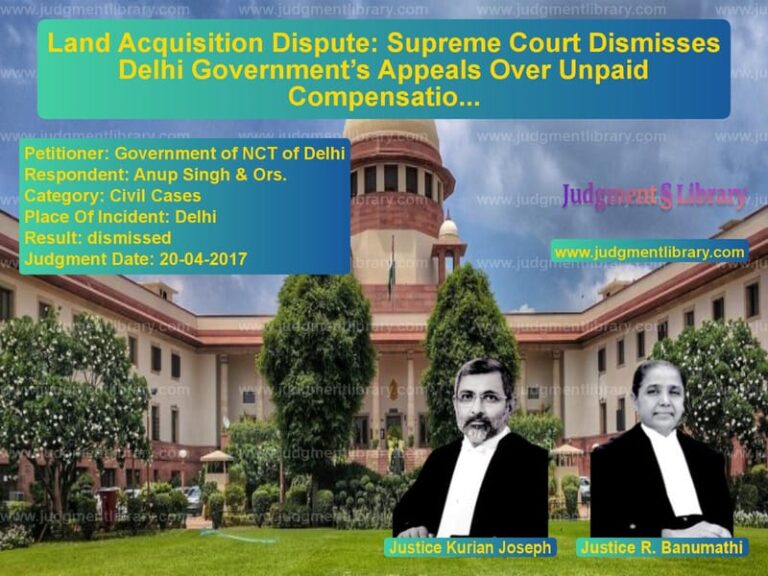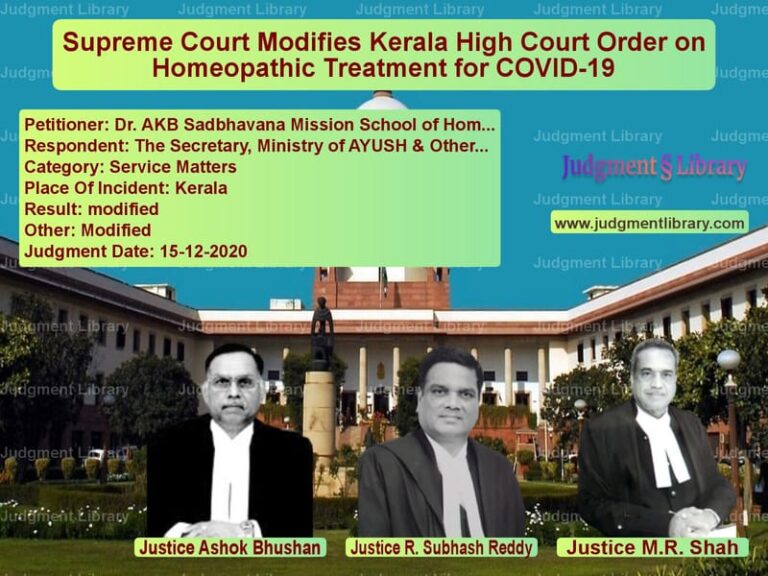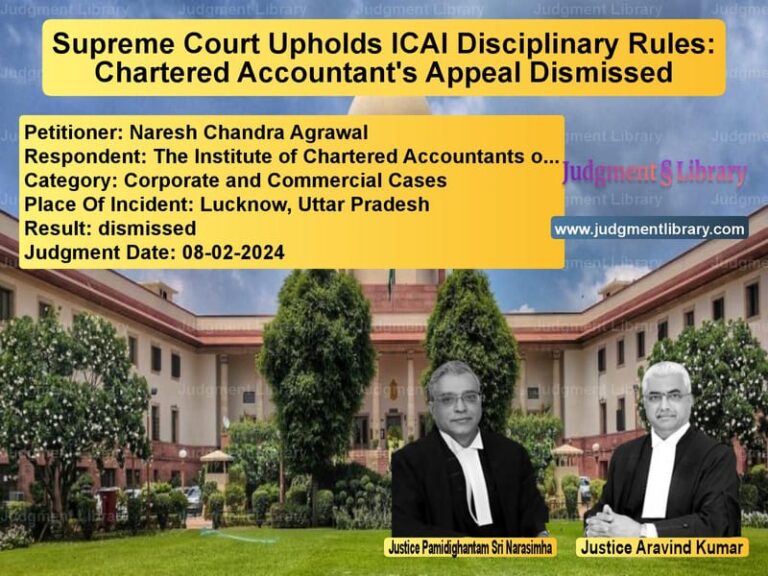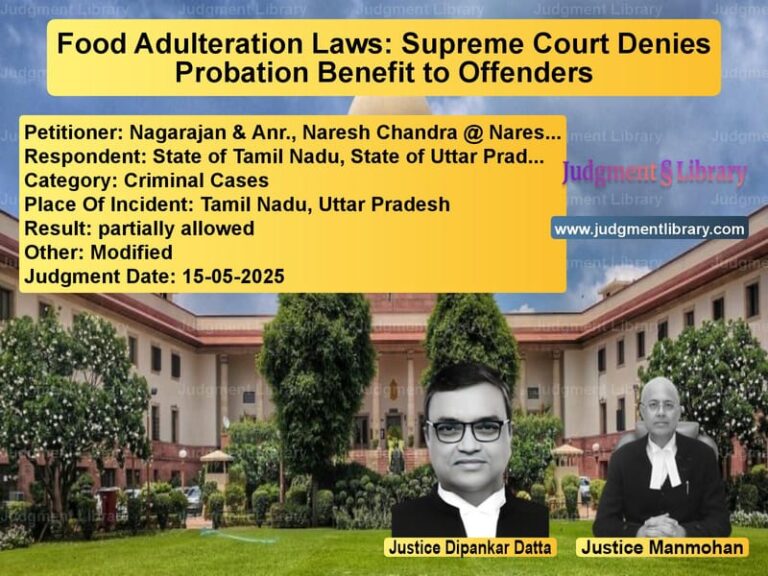Medical College Licensing Dispute: Supreme Court Grants Relief to World College of Medical Sciences
The case of World College of Medical Sciences & Research and Hospital vs. Union of India & Anr. is a significant judgment in the domain of medical education regulation. The Supreme Court was tasked with determining whether the Medical Council of India (MCI) and the Ministry of Health and Family Welfare (MHFW) had acted justly in barring the college from admitting students for two academic years (2017-18 and 2018-19) and encashing its bank guarantee.
Background of the Case
The petitioner, World College of Medical Sciences & Research, sought renewal of permission to admit students for the academic year 2017-18. The MCI conducted an inspection and reported several deficiencies. Based on these findings, the Ministry of Health and Family Welfare passed an order on May 31, 2017, debarring the college from admitting students for two years and authorizing MCI to encash the bank guarantee of Rs. 2 crore.
The college challenged this decision in the Supreme Court, arguing that the deficiencies cited were either incorrect or had been rectified.
Arguments of the Petitioner
The college put forth the following arguments:
- The deficiencies noted in the inspection report were either non-existent or had been addressed before the final decision was made.
- The debarment for two years and encashment of the bank guarantee were excessive and arbitrary.
- The inspection was conducted just before a major festival, impacting attendance and bed occupancy.
- The Medical Oversight Committee (OC), appointed by the Supreme Court, had accepted the college’s explanation regarding faculty and bed occupancy.
- The Ministry failed to provide a reasoned order and ignored the findings of the Oversight Committee.
Arguments of the Respondents
The Union of India and MCI countered these claims, arguing:
- The deficiencies noted in the assessment report were substantial, affecting the quality of medical education.
- The petitioner failed to meet the minimum standards required for medical colleges.
- The timing of the inspection was within permissible limits, and festival-related absences should not affect compliance standards.
- The recommendation of debarment and encashment of the bank guarantee was in line with established regulations to ensure accountability in medical education.
Key Observations by the Court
The Supreme Court analyzed the evidence presented by both parties and made the following key observations:
- The Ministry failed to provide adequate reasoning while rejecting the findings of the Oversight Committee.
- The Court emphasized that regulatory actions must be based on conclusive evidence, not mere procedural assessments.
- Bed occupancy and faculty presence were crucial parameters, but their assessment should be done in a fair and consistent manner.
- The college had made efforts to rectify deficiencies, and these efforts were not adequately considered by the authorities.
Important Extract from the Judgment:
“The power to regulate medical education must be exercised fairly and transparently. Debarring a medical institution from admitting students must be a measure of last resort, supported by substantial evidence of non-compliance.”
Final Judgment
The Supreme Court ruled in favor of the petitioner and passed the following directions:
- The order debarring the college for two years was quashed.
- The Ministry was directed to conduct a fresh assessment within two months.
- The encashment of the bank guarantee was stayed until a final decision was reached.
- The college was allowed to continue operations for the academic session 2016-17 but was required to reapply for renewal for 2018-19.
Implications of the Judgment
This ruling has far-reaching consequences for medical colleges and regulatory bodies:
- It reinforces the importance of due process in medical education regulation.
- It establishes that decisions affecting medical institutions must be backed by clear and reasoned orders.
- It prevents arbitrary actions by regulatory authorities that could harm students and educational institutions.
- It emphasizes the role of judicial oversight in ensuring fairness in licensing and accreditation processes.
Conclusion
The Supreme Court’s ruling in this case serves as a vital precedent in medical education regulation. It upholds the principles of fairness and transparency while ensuring that medical colleges comply with essential standards. The judgment provides a balanced approach, safeguarding both the interests of students and the integrity of the regulatory framework governing medical education in India.
Don’t miss out on the full details! Download the complete judgment in PDF format below and gain valuable insights instantly!
Download Judgment: World College of Med vs Union of India & Anr Supreme Court of India Judgment Dated 05-09-2017.pdf
Direct Downlaod Judgment: Direct downlaod this Judgment
See all petitions in Recruitment Policies
See all petitions in Public Sector Employees
See all petitions in Employment Disputes
See all petitions in Judgment by Dipak Misra
See all petitions in Judgment by A M Khanwilkar
See all petitions in Judgment by Dhananjaya Y Chandrachud
See all petitions in partially allowed
See all petitions in Remanded
See all petitions in supreme court of India judgments September 2017
See all petitions in 2017 judgments
See all posts in Service Matters Category
See all allowed petitions in Service Matters Category
See all Dismissed petitions in Service Matters Category
See all partially allowed petitions in Service Matters Category

